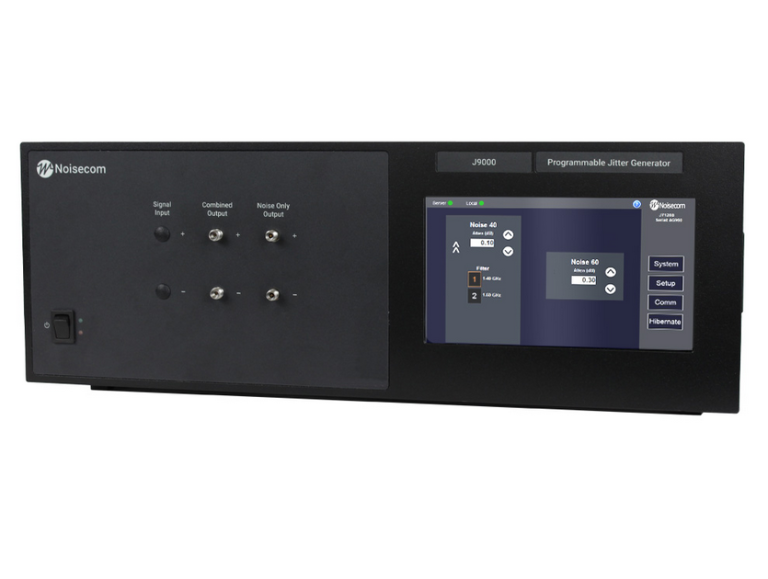Wireless Telecom Group, Inc. (NYSE American: WTT), announced today that its Noisecom brand has introduced a new, industry-leading 60 GHz jitter noise generator, setting a new benchmark for high frequency noise generation in a programmable instrument. Along with the introduction of this record-setting performance, the full line of Noisecom J7000B jitter noise generators from 10 MHz to 60 GHz are now being built using the innovative UFX7000B platform and streamlined user interface. The J7000B jitter noise generator is the ideal tool for introducing random jitter into a serial data bus to test for system robustness and compliance with industry standards for current, emerging, and next-generation protocols. Available in several off-the-shelf models, but highly customizable, the J7000B can be configured to meet the unique testing requirements of new systems and chipsets even in the earliest stages of development and test.
“The J7000 platform has been trusted by leading semiconductor manufacturers for many years, and this new leap in performance to 60 GHz ensures our customers can continue to rely on us for jitter testing in their newest designs for many years to come,” said Dr. Lee McMillan, VP of Engineering and Manufacturing. “Noisecom is proud to continue to push the limits of noise generation as we have done with our coaxial and waveguide noise sources to 110 GHz in recent years and now the first programmable benchtop instrument capable of 60 GHz noise generation.”
The J7000B jitter noise generator generates additive white Gaussian noise (AWGN) with a large crest factor to model real world random jitter. Managing random jitter is critical to the performance and capability of high-speed communication busses and devices. Assessing system robustness with a jitter noise generator enables designers to have confidence in their products and compliance testing. With the J7000B, engineers can add random jitter directly to a data stream to evaluate the performance of their device and measure the results with the tools they typically use, such as an oscilloscope or bit error rate tester. Noise can be added to single-ended, differential, or PAM4 signals and the instrument can be configured for multiple channels at once with individual control for each. By working closely with the Noisecom engineering team, designers and test engineers can customize the J7000B with the specific frequency range, power levels, and flatness required for their new design, industry standard, or jitter tolerance test requirement.


